Introduction
In April 2025, I received an email from James who wanted to know about Carey's Lane or Captain Carey's Lane in Old Market, Bristol. Carey's Lane was old, it is on the 1750 Rocque map of Bristol, but on the 1828 Ashmead map it is shown as Captain Carey's Lane. It was demolished in 1962, to make way for the Temple Way Underpass and Old Market Roundabout.
Here is everything I know about Captain Carey's Lane, the buildings and the people who lived in them. If you know more, please email me.
Where Was It?
If you stand outside the Stag and Hounds public house which was built in 1483 and the site of the Pie Poudre Court from 1373 to 1973, and look across Old Market Street, you will see the brick side of The Quorum office spaces which was built in 1985. Just to the left of that was once the entrance to Captain Carey's Lane which ran from Old Market Street to Redcross Street.
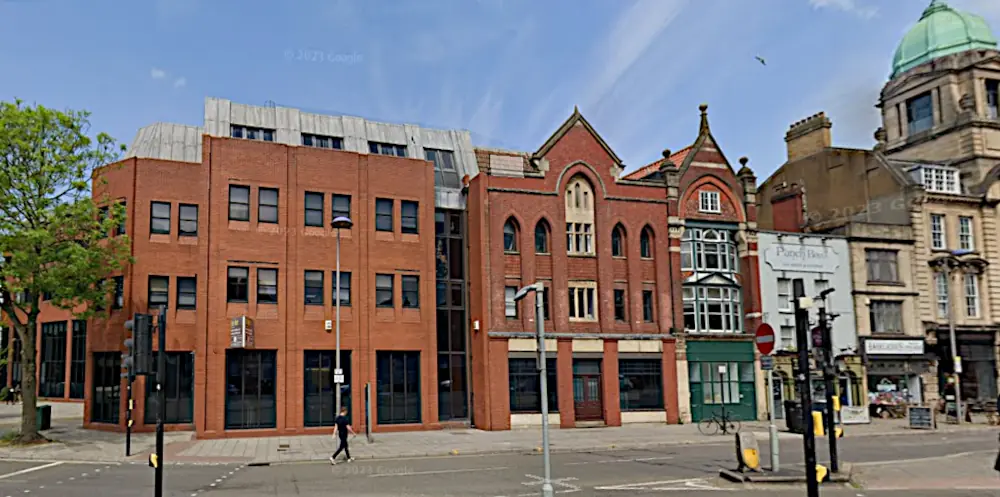
The Quorum, Old Market, Bristol. Captain Carey's Lane was just to the left of the building
The ornate building to the right in the above photo is the Methodist Central Hall which was built in 1924.
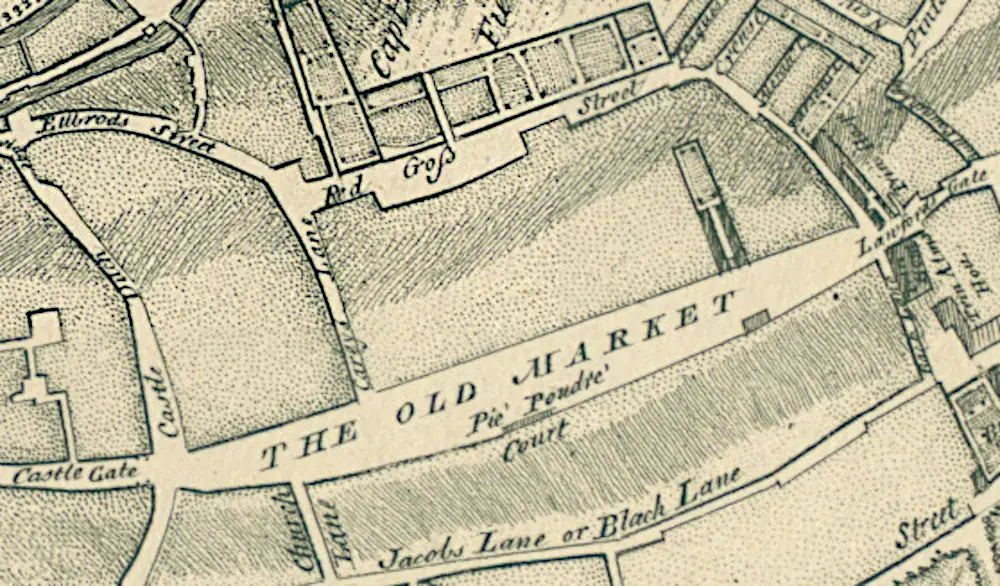
Carey's Lane, Old Market, Bristol on the 1750 Rocque map
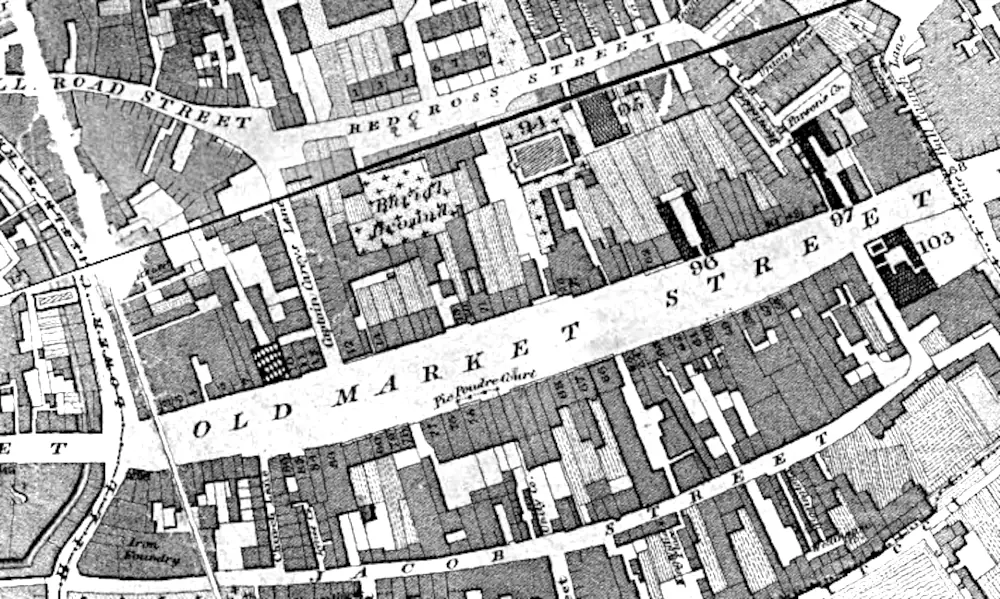
Captain Carey's Lane, Old Market, Bristol on the 1828 Ashmead map
Who Was It Named After?
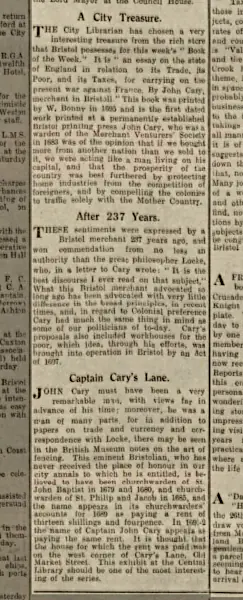 The lane is thought to be named after John Cary, a Bristol-based merchant and son of Thomas Cary, vicar of St Philip and Jacob, and brother of William, vicar of Temple and later of St Philip's. John Cary built many of the houses on Carey's Lane. He was known for his work with the poor and originated the idea of the Common Poor Rate of 1696.
The lane is thought to be named after John Cary, a Bristol-based merchant and son of Thomas Cary, vicar of St Philip and Jacob, and brother of William, vicar of Temple and later of St Philip's. John Cary built many of the houses on Carey's Lane. He was known for his work with the poor and originated the idea of the Common Poor Rate of 1696.
He is thoguht to have been born in March 1649, and is believed to have died sometime between 1717 and 1722. He was the eldest son of Mary Cary and Shershaw Cary. He was descended from a family of merchants, and his father was a sugar trader in the Iberian Peninsula and West Indies.
He spent some of his late youth working as an apprentice to a linen draper but became a merchant in 1672, and began his career dealing in goods and raw materials such as Caribbean sugar and Madeira wines. His merchant tradings led him to sail ships across the Atlantic, Caribbean, and Mediterranean.
By 1677, he had joined the Bristol Society of Merchant Venturers and was promoted to become a warden in 1683. In the 1690s, he was named the Society's representative based in London where he advised London city members on the state of trade in Bristol.
He was a devout Anglican who served as a churchwarden for several parishes in Bristol and was an advocate of social reform, signing his name to support petitions which ranged from reducing the duties on imported sugar to opening the slave trade to Bristol. He also promoted the establishment of workhouses for the poor. Described as the "philanthropic Bristol merchant", after recognizing the dire situation in Bristol in that there were over a thousand paupers who inhabited the city, he was inspired to build a workhouse where these individuals could "be compelled to maintain themselves". In 1697, he was the main organizer of the Bristol Corporation of the Poor which provided relief after the 1696 Poor Act in Bristol.
The newspaper cutting on the right comes from the Western Daily Press of 29 February 1932. It says:
A City Treasure.
The City Librarian has chosen a very interesting treasure from the rich store that Bristol possesses for this week's "Book of the Week." It is "an essay on the state of England in relation to its Trade, its Poor, and its Taxes, for carrying on the present war against, France. By John Cary, merchant in Bristoll." This book was printed by W. Bonnv in 1695 and is the first dated work printed at a permanently established Bristol printing press. John Cary, who was a warden of the Merchant Venturers' Society in 1683 was of the opinion that if we bought more from another nation than we sold to it, we were acting like a man living on his capital, and that the prosperity of the country was best furthered by protecting home industries from the competition of foreigners, and by compelling the colonies to traffic solely with the Mother Country.
After 237 Years.
These sentiments were expressed by a Bristol merchant 237 years ago, and won conmmendation from no less an authority than the great philosopher Locke, who, in a letter to Cary wrote: "It is the best discourse I ever read on that subject." What this Bristol merchant advocated with very little difference in broad principles, in recent times, and, in regard to Colonial preference Cary had much the same thing in mind as some of our politicians of to-day. Cary's proposals included workhouses for the poor, which idea, through his efforts, was brought into operation in Bristol by an Act of 1697.
Captain Cary's Lane.
John Cary must have been a very remarkable man, with views far in advance of his time; moreover, he was a man of many parts, for in addition to papers on trade and currency and currency and correspondence with Locke, there may be seen in the British Museum notes on the art of fencing. This eminent Bristolian, who has never received the place of honour in our city annals to which he is entitled, is believed to have been churchwarden of St. John Baptist in 1679 and 1680, and churchwarden of St. Philip nod Jacob in 1685, and the name appears in its churchwarders' accounts for 1689 paying a rent of thirteen shillings and fourpence. In 1691-2 the name of Captain John Cary appears as paying the same rent. It is that the house for which the rent was paid was on the west corner of Cary's Lane, Old Market Street, This exhibit at the Central Library should be one of the most interesting of the series.
Who Lived There?
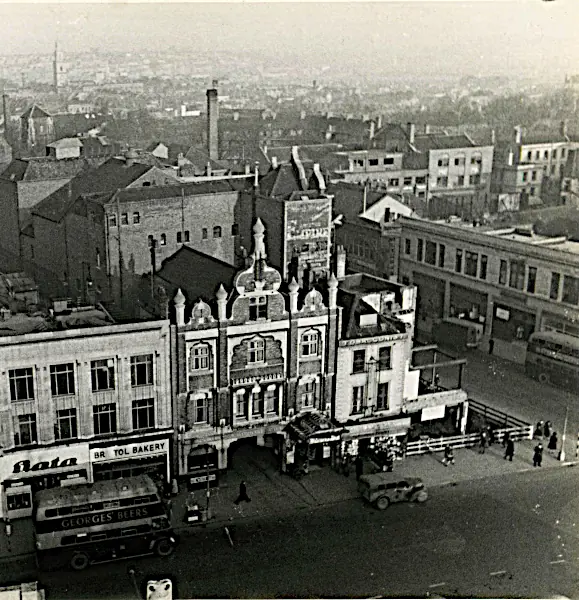
Empire Theatre / Captain Carey's Lane, Old Market, Bristol, in the 1940s
The Empire Theatre or Empire Palace of Varieties had a small frontage on Old Market Street, the canopied entrance on the right of the Victorian Mock-Arabian building but the main frontage was in Captain Carey's Lane. The Old Market entrance was for the boxes, circle, and stalls, the entrance in Captain Carey's Lane being for the patrons of the gallery, pit, and balcony. The theatre was designed by Wylson & Long, cost around £40,000 to build, and opened on 6 November 1893. Starting life as a music hall, the building became the Empire Cinema in the 1930s, with the first film shown being a talkie. The theatre was closed to the public in 1954 and was used as a BBC studio for a further 8 years. In its hey-day the theatre seated over 1,500 people.
Before the Empire Theatre, the site was a mineral water factory which was run by Thomas Brooke from the 1860s until it closed following the amalgamation of Brooke's business with Batten & Prudencio to form Brooke & Prudencio Ltd. in 1889. By 1871 Brooke was employing 10 men and 11 boys at the Captain Carey's Lane factory. The factory was subsequently demolished to clear the site for the construction of the Empire Theatre.
Along the lane a little way was the Aerated Water Manufactory.
Captain Carey's Lane was also home to the Tatler Cinema, which was located on the east side near Red Cross Street. The cinema opened as the Olympia in 1910, and was reconstructed internally in 1947 by W. H. Watkins for Joseph Cohen of Jacey Cinemas Ltd. and renamed The Tatler.
Neale & Howel, who were deal, timber and slate merchants.
The Bristol Royal Infirmary (BRI) report of 1927 says that H. H. Brain, Ltd. of Garryowen House, Carey's Lane had an annual subscription to their fund of £1 1s.
The lane was home to a variety of people over the years...
Sketchley's Directory of 1775, records that William Bourne, a bookeeper; Clementine Tudway; and Francis Wickland, a bleeder, were living in the lane. A bleeder was someone who bled people as a medical proceedure. Francis Wickland is also listed in Matthew's 1792 Driectory as being a dentist living at No. 86.
Joseph Jones, a carpenter, lived in the lane sometime before 1822.
Pigot's Directory says that in 1830, Henry Lambden, a salt merchant; Solomon Lander, a gunsmith; George Monk, caprenter and builder; Robert Weare, a brightsmith and bellhanger; Sarah West, a clothes salesman; and Isaac Withers, a cooper, were living in the lane.
Joseph Deakin was living there in 1851.
Street pitcher James Daley lived there. He died on 13 June 1866.
In 1871, the Cardell family were living at No. 3. George Cardell was a Warehouseman, aged 50, born in Oundle, Northants. Mary Ann Cardell is a dressmaker, aged 47 born in Middlesex. Their children were Robert, a haulier, aged 17; Laura, a scholar, aged 9; Edwin, aged 7, and George, aged 3.
Kelly's Directory of 1884, lists George William Moore, a cork cutter, as living at No. 11.
Why Was It Demolished?
By 1970, the entire west end of Old Market Street had changed. The south side of the street had been demolished up to the Stag and Hounds public house and the site of the Pie Poudre Court had been demolished. To the north, so had everything up to just past Captain Carey's Lane. What replaced them was the Temple Way Underpass and Old Market Roundabout.
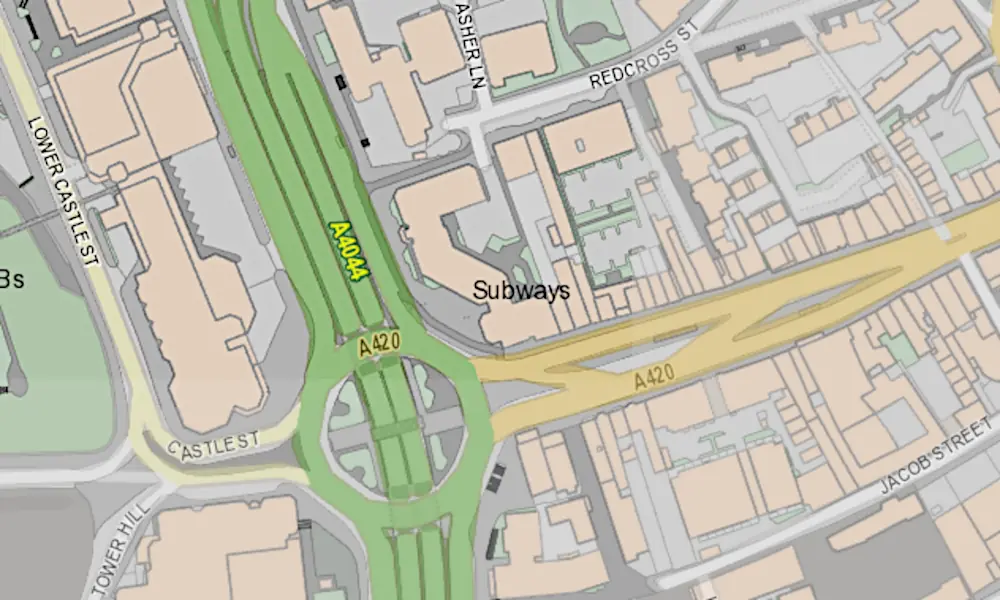
The west end of Old Market Street in 2019
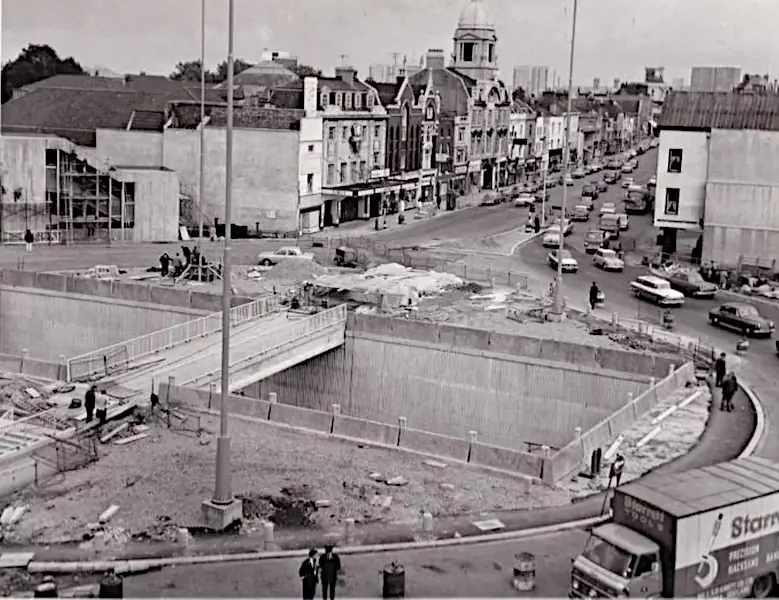
Construction of the Temple Way Underpass and Old Market Roundabout in 1968
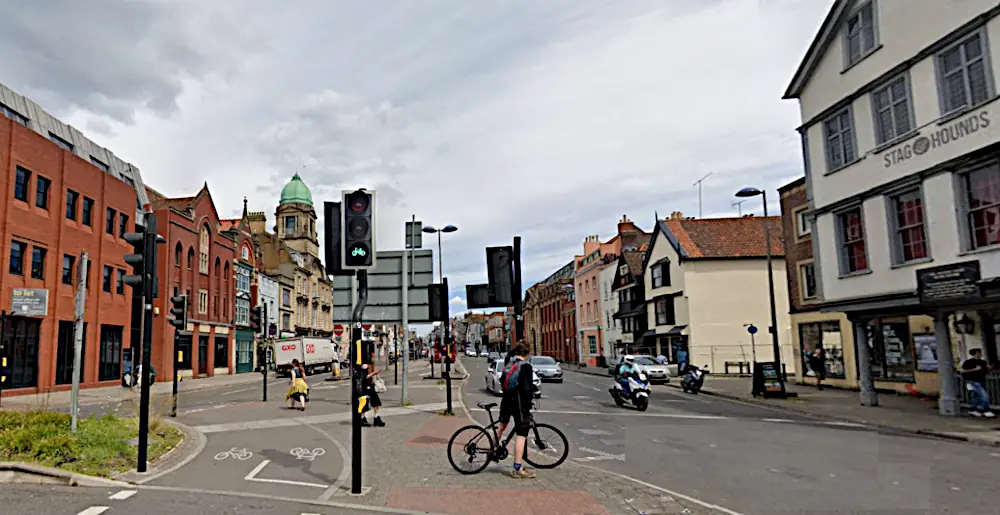
Looking up Old Market Street from the roundabout in 2024
Sources & Resources
A look at Old Market through more than a century of change - Bristol Live
Bristol City Council map site
Bristol Royal Infirmary report of 1927
Captain Carey's Lane, Old Market (Industrial Bristol) - Internet Archive
John Cary (Wikipedia)
Robert John and Mary Ann Southwell (Pettigrew Family Website)
The Empire Theatre, Corner of Old Market Street and Captain Carey's Lane, Bristol (Music Hall and Theatre History)
The London Gazette 21 September 1822
The London Gazette 24 July 1866
Thomas and Charles Brooke (West Country Bottle Museum)